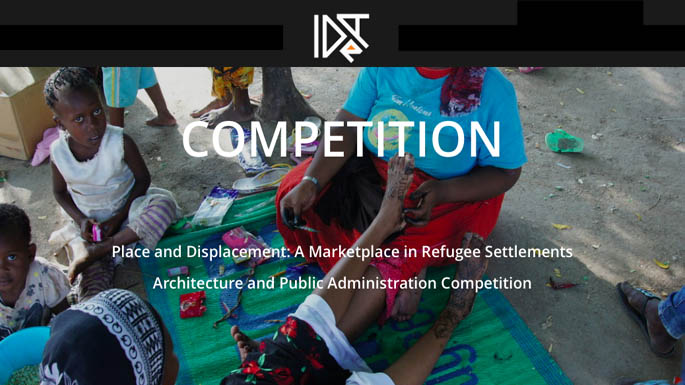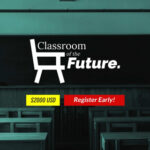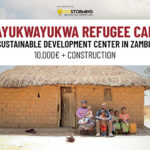Submission: February 01, 2017
Registration: February 01, 2017
Language: English
Location: Kakuma Refugee Camp, Kenya; Zaatari Refugee Camp, Jordan; Berlin, Germany
Prizes: $30,000 Total; 3 Winning Teams – $3,000 cash + travel to New York City; 1 Overall Winning Team – Extra $3,000; 6 Honorable Mentions $1,000.
Type: Open
IDeA challenges the innovative minds around the globe to design a marketplace with an operational plan for a vulnerable population (adolescents, children, single mothers, people with trauma, etc) in one of the refugee settlements below. The marketplace should be able to run for long-term, i.e. 3-5 years, and benefit as many people as possible. The overall budget limit for both construction and operation of the entire marketplace is $100,000 or less.
We challenge the innovative minds around the globe to design a marketplace with an operational plan for a vulnerable population (adolescents, single mothers, people with trauma, etc) in one of the refugee settlements in Kenya, Jordan and Germany. Refugee livelihoods in transitional settlements have become a crucial topic in contemporary geopolitical relations.
Most inhabitants in refugee settlements rely on humanitarian aid and cannot fully exercise their agency and skill sets. A marketplace can become an embodiment of dignity and resilience that respects refugee inhabitants’ autonomy, creativity and capability. Through trading activities, refugee inhabitants can connect with the world and future beyond the settlements.
OBJECTIVES
- Identify the vulnerable population and their needs that the marketplace should serve for.
- Consider how the refugee inhabitants can be engaged in the design process.
- Explore innovative ways the marketplace can foster dignity, creativity, community formation, social interaction and cultural exchange.
- Create a solution for the marketplace to be operated in a cost- effective and sustainable way.
- Examine how the design can be adaptable to unforeseeable political, social, environmental or other changes.
- Submissions are not required to meet each of the above objectives, however, doing so may give the entry an advantage over others which do not include all the objectives.
PRIZES
Total: $30,000
1 Overall Winning Team $3,000
One overall winning team will be selected at the final symposium and rewarded an additional $3,000.
3 Winning Teams $7,000 Per Team
Each winning team will be awarded a cash prize of $3,000, and round trip flight tickets and accommodation in New York City worth $4,000 per team (maximum 2 people per team). Winning teams will participate in an immersive 24-hour workshop, and present their proposals at a symposium to policy makers, architects, academics, NGOs, and philanthropists.
6 Honorable Mentions $1,000 Per Team
* All awarded proposals will be presented to a group of related humanitarian organizations and philanthropies with credits to participants.
SCHEDULE
Registration (rolling basis): Nov. 14, 2016 11:59 PM EST – Feb. 1, 2017 11:59 PM EST
$30 early (Nov 14 – Dec 3, 2016)
$50 regular (Dec 4 – Dec 31, 2016)
$70 late (Jan 1 – Feb 1, 2017)
Submission : Dec. 3, 2016 11:59 PM EST – Feb. 1, 2017 11:59 PM EST
Workshop: Mar. 31, 2017
Symposium: Apr. 1, 2017
ELIGIBILITY
Competition is open to all who wish to compete. No professional or educational qualification is required. Forming an interdisciplinary team of 2 is strongly recommended. A team with more than 2 members is allowed, but please keep in mind that we only offer flight tickets and accommodations in New York City for 2 members per winning team.
DELIVERABLES
The proposal should take the form of a graphic-oriented spread and an operational plan. The graphic spread should present a working concept that will be ready for further design development, whilst the operational plan should strive to be actionable and sustainable. All information submitted by participants must be in English.
GRAPHIC SPREAD (2 pages) – 24 in x 36 in
Include: title, drawings, graphics or photos, and captions to explain background and opportunities, concept and solutions, and design parameters.
OPERATIONAL PLAN (3 pages) – Times New Roman, font size 11, single spaced, 8.5 in x 11 in, 1” margins on all sides.
Include: summary, feasibility, sustainability, scalability, measuring social impact, critical risks, and budget. Page limit does not include endnotes or references.








